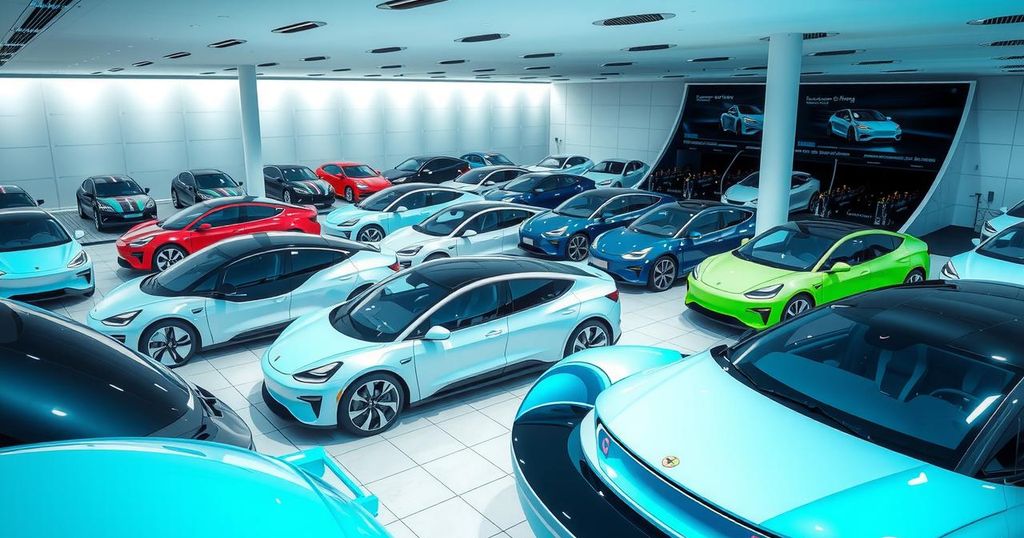Trump’s Key Moments During His Middle East Tour Unveiled
Trump’s Middle East tour led to major investment agreements, the first meeting with Syria’s president in 25 years, talks on lifting sanctions on Syria, and ideas around a nuclear deal with Iran. Highlights include significant arms deals in Saudi Arabia, business agreements in Qatar, and an AI investment in the UAE. Trump’s controversial suggestions about Gaza and accepting a luxury plane from Qatar have sparked discussion and criticism.
President Donald Trump’s recent three-nation tour of the Middle East has stirred considerable conversation regarding the U.S.’s future relationships within the region. His journey, which spanned Saudi Arabia, Qatar, and the United Arab Emirates, was marked by notable agreements and a renewed focus on diplomatic relations, including hints of a potential nuclear agreement with Iran.
Trump commenced his tour in Riyadh on May 13, where he was warmly welcomed at the Royal Saudi Palace. The President signed a staggering $142 billion arms deal with Saudi leaders, underlining the U.S.’s commitment to partner with the Kingdom on numerous fronts, including energy and technology. The White House reported that the total value of investments secured during the trip amounts to $600 billion.
Qatar was the next destination on May 14, where Trump finalized major agreements, including a $96 billion deal with Boeing. He also entertained controversial ideas regarding a U.S. takeover of the Gaza Strip during discussions with business executives in Doha. Such remarks prompted significant backlash and discussions about the implications for Palestinian residents.
The final stop was in the United Arab Emirates on May 15, where Trump initiated discussions surrounding an agreement in artificial intelligence valued at approximately $1.4 trillion. After concluding his visits, the President reflected on his accomplishments, acknowledging that future leaders may claim credit for the initiatives he has put into motion.
During the tour, Trump announced plans to consider lifting longstanding sanctions on Syria. He deemed these restrictions “brutal and crippling,” but necessary under previous conditions. His approach towards Syria has generated mixed reactions, with experts warning about the complexities involved in dismantling sanctions due to existing legal and bureaucratic hurdles.
Moreover, Trump’s meeting with Syrian President Ahmed al-Sharaa was striking, as it marked a rare moment in U.S.-Syrian relations. He characterized al-Sharaa as a formidable leader and provided counsel on establishing ties with Israel while tackling terrorism within Syria, indicating an unforeseen pivot in U.S. policy.
On a different note, the President’s intention to accept a luxury Boeing aircraft valued at around $400 million from Qatar spurred ethical concerns. Critics, including Democratic Senator Ed Markey, likened the gesture to a potential security threat. Trump defended his position, asserting that the aircraft would be lent to the Air Force while additional jets are procured.
Trump’s proposed “freedom zone” in Gaza was another contentious subject. During discussions about the ongoing Israel-Hamas conflict, he suggested a U.S. administration of the territory, an idea that many international leaders have rebuked for its implications on Palestinian displacement.
Possibly the most evolving issue from Trump’s trip was the potential revival of a nuclear agreement with Iran. Discussions hinted at a willingness on both sides to negotiate. Trump articulated that an agreement depends on Iran halting its terrorist activities and ensuring the cessation of any nuclear weapon development.
Talks involving U.S. negotiators suggest a serious shift, with Iranian officials signaling readiness for negotiations, contingent on the lifting of sanctions. However, as the tension remains palpable, some Iranian officials continue to assert their right to enrich uranium, complicating the negotiation landscape.
As President Trump returns to Washington, D.C., the repercussions of his Middle East expedition will unfold. With various agreements in place and a range of diplomatic discussions initiated, the depth of his engagements may transform U.S.-Middle East relations in unexpected ways.
In summary, President Trump’s Middle East tour marked a pivotal moment in U.S. foreign policy relations, characterized by significant arms agreements, controversial diplomacy, and potential advancements towards resolving long-standing conflicts. The President’s interactions with leaders in Saudi Arabia, Qatar, and the UAE cultivated a renewed dialogue on security, economic investment, and even nuclear negotiations with Iran. As the fallout develops, it remains to be seen how these initiatives will reshape future U.S. engagement in the region.
Original Source: time.com




Post Comment